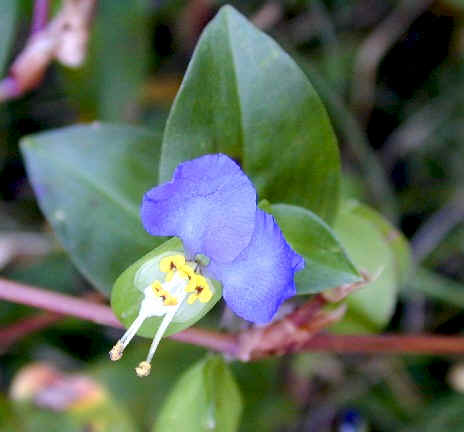| Commelina communis | |
|
Common Dayflower
|
|
| Origin Of Species | |
| Asia | |
| Physical Description | |
| Common dayflower is a small erect or creeping annual that grows in colonies. The alternating lanceolate leaves are between two and four inches long and are about an inch wide. The characteristic flowers possess two blue petals and one white petal and bloom for only one day. Flowering of common dayflowers occurs between May and October. The fruit is a tiny brown capsule. | |
| Habitat And Distribution | |
| Common dayflower is prominent in damp areas, particularly in old fields, thickets, and bottomland woods. The common dayflower is often a weed of landscapes and nurseries. It is located in the eastern and midwestern portion of the United States, as far west as Iowa and North Dakota, south as Texas and Louisiana, and north as New York and Massachusetts. | |
| Location On Campus | |
| Common dayflower is to be expected in any neglected area with reasonably moist soil. Large patches occur between the commuter parking lot behind Gottwald Science Center and the intramural fields, and also along the former Gambles Mill Road (between Westham Creek and the Country Club of Virginia). | |
| Negative Impacts | |
| Common dayflower is a fast-growing flower that spreads quickly, out-competing native vegetation for necessary space, water, and nutrients. | |
| VDCR Invasiveness Ranking | |
| Occasionally Invasive Species Additional Images: Flower with stem Flower |
|
